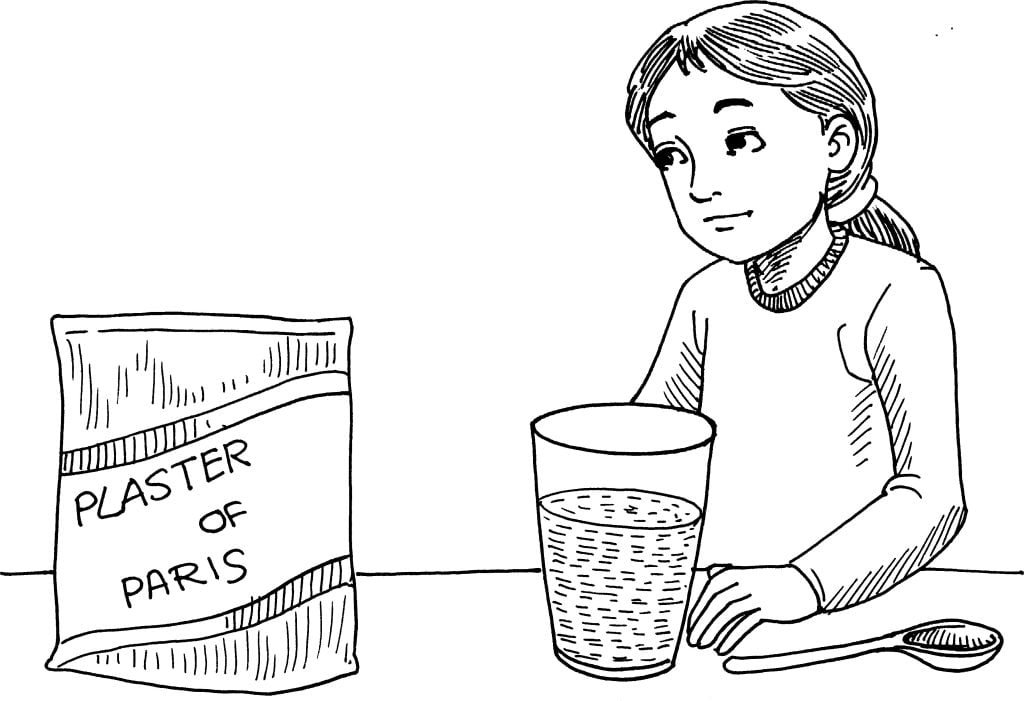
In this experiment we will observe a phase change due to the addition of water.
Things Required:
1/3 cup of Plaster of Paris
Tablespoon
Paper cup
Plastic spoon
Directions:
Pour 1/3 cup of Plaster of Paris into the paper cup. Add 3 tablespoonfuls of water and stir with the plastic spoon. Note: Be careful not to put any of the plaster in the sink as it can clog the drain. Throw the plastic spoon away. Squeeze the cup gently and observe the results every 20 minutes.
This Is What Happens:
A very thick liquid is produced at first. The expected results after:
a. 20 min.: Water collects on top.
b. 40 min.: The liquid is thicker.
c. 60 min.: The liquid is very thick and sticks to the sides of the cup.
d. 80 min.: The liquid is becoming firmer.
e. 120 min.: It is no longer a liquid. The material has solidified, but still feels moist.
f. 140 min.: The block is firm.
During these changes the cup feels warm.
Science Behind It:
Plaster of Paris is made by grinding a clear, shiny crystal called gypsum into a powder. The powder is heated to remove all of its moisture. This dry powder changes back into a solid when water is added, but it never looks clear and shiny again. Heat is given off during this phase change.
